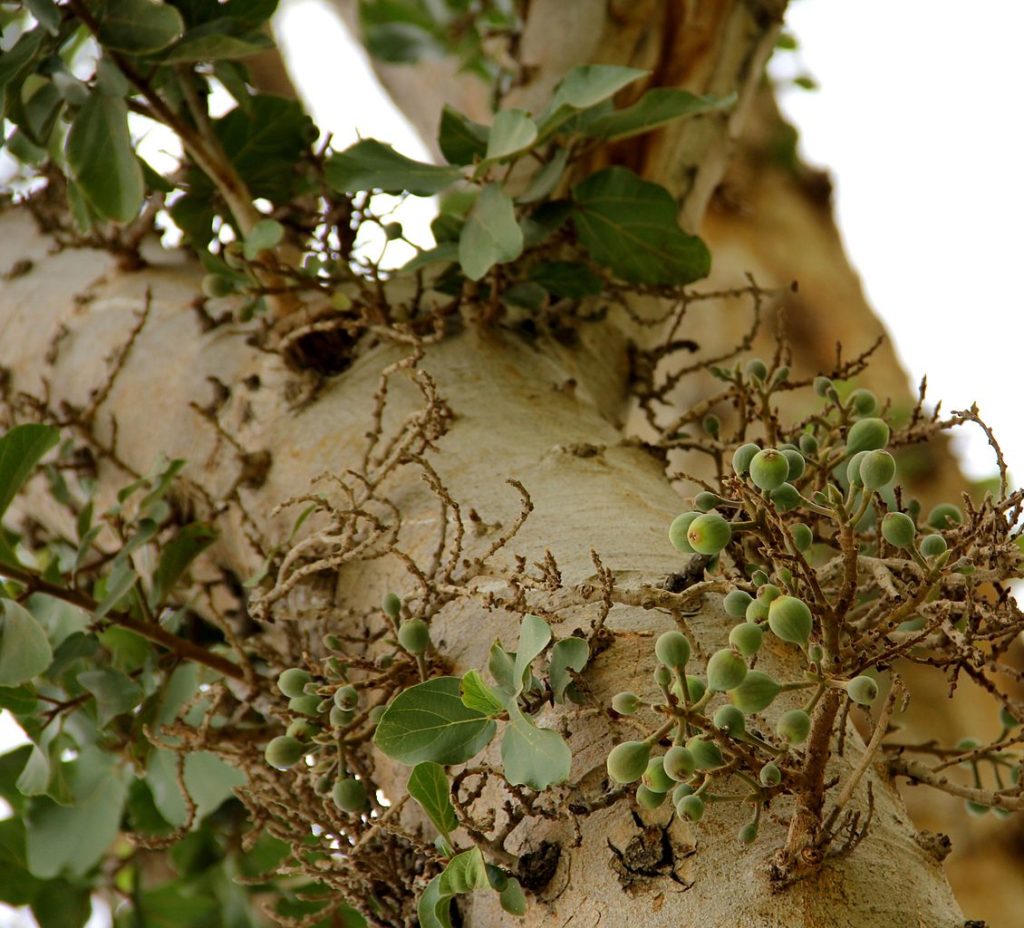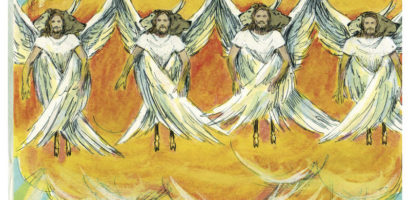According to the Gospels Jesus journeyed to Jerusalem only a handful of times in his life. Travelling from his hometown of Nazareth in the Galilee south to Jerusalem was no simple task. The most direct route, which followed the ridge of the central hill country, was considered dangerous because it passed through Samaria. During the period of Jesus, relations between Jews and Samaritans were hostile. According to the first century Jewish historian Josephus it was not uncommon for Jewish pilgrims to be attacked by Samaritans on the road to Jerusalem. This, by the way, is precisely the reason why the altruistic behavior of the Samaritan man depicted in the Parable of the Good Samaritan (Luke 10:30-37) is so surprising. So from Nazareth, Jesus likely descended into the Jordan Rift Valley, following the Jordan River until he reached Jericho. This was familiar territory for Jesus. Several years prior, he had been a disciple of John the Baptist in this very region. It was here in the Wilderness of Judah that he had ascended to a mountain to be tempted by Satan for forty days and forty nights. So Jesus knew the region of Jericho well. Maybe this is the reason that when he arrived, the crowds welcomed him so eagerly. The Gospel of Luke says that the throngs were so thick, that a tax collector by the name of Zacchaeus had to climb up on a sycamore tree to get a view. Here is the passage:
He entered Jericho and was passing through it. 2 A man was there named Zacchaeus; he was a chief tax collector and was rich. 3 He was trying to see who Jesus was, but on account of the crowd he could not, because he was short in stature. 4 So he ran ahead and climbed a sycamore tree to see him, because he was going to pass that way. 5 When Jesus came to the place, he looked up and said to him, “Zacchaeus, hurry and come down; for I must stay at your house today.” 6 So he hurried down and was happy to welcome him.7 All who saw it began to grumble and said, “He has gone to be the guest of one who is a sinner.” 8 Zacchaeus stood there and said to the Lord, “Look, half of my possessions, Lord, I will give to the poor; and if I have defrauded anyone of anything, I will pay back four times as much.” 9 Then Jesus said to him, “Today salvation has come to this house, because he too is a son of Abraham.10 For the Son of Man came to seek out and to save the lost.”
Why did he chose to climb this particular variety of tree? The simple answer is that it is a tall tree which offers a good view. But there are many other tall trees which he could have used. Jericho is known in the Bible as “the city of palm trees” (Deuteronomy 34:3); why didn’t Zacchaeus just climb to the top of a palm tree? I want to offer several possible answers.
The first reason is that the sycamore is a tree which is not endemic to the Land of Israel. In the Bible the sycamore (Heb. שקמה shikma) it is associated with two areas: the Shephelah lowland and Egypt. King David appoints an manager in charge of the “olive trees and sycamore trees in the Shephelah” (1 Chronicles 27:28). The Shephelah is an area of rolling hills which is outside the Judahite heartland up in the hill country. Similarly, God destroys the Egyptian “vines with hail, and their sycamores with frost” (Psalm 78:47). So the sycamore is a mighty tree, famous for its timber, but quite foreign to the Israelites. It is fitting that a tax collector – someone who was considered an social outsider by Jews because he collaborated with the Roman authorities – should be sitting upon a tree that is a botanical outsider. As we know, Jesus was particularly fond of sharing meals with tax collectors and other outcasts. His explanation is that he came “to call not the righteous but the sinners to repentance” (Luke 5:32).
A second reason is that sycamore tree is a member of the Ficus genus. There are hundreds of varieties of ficus, including another famous tree which features prominently in Jesus’ week in Jerusalem: the fig tree. As he descends the Mount of Olives Jesus curses a fig tree which contains no fruit. He then enters the Temple and causes a public disturbance which is known as the “cleansing of the Temple”. It is this act, more than anything else, that raises the ire of the Jewish authorities and paves the way for Jesus’ arrest and crucifixion. Following the cleansing of the Temple, Jesus returns to the fig tree and finds it withered. The message is that the withered fig tree symbolizes the future destruction of the Temple (Mark 11:12-25). The sycamore and fig are cousins. Zacchaeus’ choice to stand on a mighty sycamore tree in Jericho points towards the crucial event that will take place in the coming days: Jesus’ cursing of the withered fig tree and the cleansing of the Temple, a blatantly revolutionary action that foretell the destruction of in Jerusalem.
A final reason is that sycamore tree produces a fruit which resembles a fig but is less sweet. Harvesting sycamore fruits is also more labor intensive than figs because the fruit is inedible unless a farmer makes an incision in the flesh before it has ripened. The prophet Amos says of himself: “I am no prophet, nor a prophet’s son; but I am a herdsman, and a dresser of sycamore trees” (Amos 7:14). The task of the “dresser of sycamore trees” (בוֹלֵס שִׁקְמִים) was to precisely to make this incision: puncturing the the sycamore fruit while it was still on the tree. This time-consuming process of puncturing the fruit is another reason for Zacchaeus’ standing place. The sycamore’s punctured fruit points towards the events at the end of Jesus’ week in Jerusalem, by calling to mind the nails of the crucifixion.







Join the conversation (No comments yet)